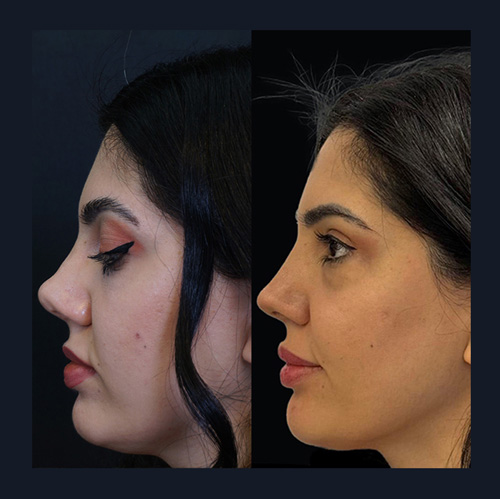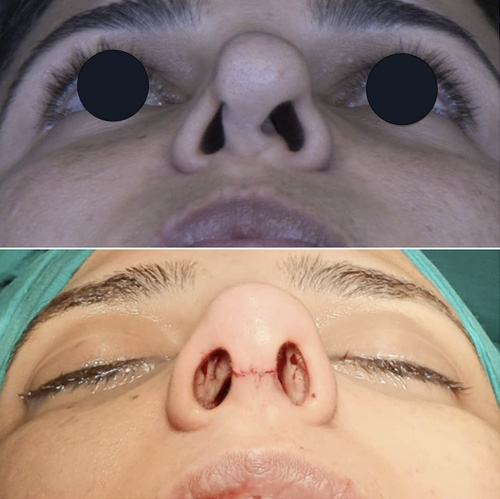Revision
Rhinoplasty

Revision Rhinoplasty
A person who has undergone rhinoplasty may sometimes be dissatisfied with the results for various reasons. Aesthetic expectations may not have been met, breathing problems may have arisen, or the shape of the nose may have changed undesirably over time. In such cases, revision rhinoplasty, a second (or subsequent) nose surgery, is performed.
Revision rhinoplasty is a more delicate surgical process that differs in many ways from the initial rhinoplasty. Understanding the fundamental reasons for these differences helps both the patient and the surgeon manage the process more effectively.
1. We Work with a Nose Whose Normal Anatomy Has Changed
In revision surgeries, we are faced with an anatomical structure that is a remnant from the first surgery, sometimes damaged or altered. Not everything may be clear from an external view. Opening the nose and accessing the internal structures can sometimes be difficult. Furthermore, what we will encounter upon access is often uncertain. Therefore, revision rhinoplasty surgery requires experience, foresight, and planning.
2. Additional Cartilage May Be Needed for Shaping
In revision noses, there is often not enough cartilage left to provide shape. In this case, cartilage reinforcement from an external source is necessary. The available sources are:
* Cartilage taken from the person's own rib,
* Commercially available, safe, and sterile cadaver cartilage,
* More rarely, ear cartilage.
In my practice, I do not prefer ear cartilage because these tissues are generally too curved, soft, and fragile. They can be difficult to shape and may deform over time.
If I am to take cartilage from the rib, I usually perform the procedure through an approximately 3 cm incision in the right inframammary fold. I enter at the junction of the chest and abdominal muscles, reaching the rib without cutting the muscle tissue. I take only the portion we need, not the entire rib. When working with respect for the tissue, no deformity occurs in this area. Since the incision scar remains hidden in the inframammary fold, it is not visible and heals very aesthetically.
When cartilage is taken from the rib, mild pain can be expected when coughing or taking deep breaths during the first week. This is a temporary condition, and patients return to their normal lives after one week.
We know that cadaver cartilage is as effective as the patient's own tissue. These materials can be used safely but incur an additional cost.
3. Psychological Sensitivity is Higher
One of the most important factors that distinguish revision rhinoplasty from the first surgery is the patient's emotional state. Patients undergoing rhinoplasty for the first time are usually excited and approach the process with hope. However, in patients scheduled for revision surgery, this excitement can give way to anxiety:
* "What if it doesn't turn out as I want this time?"
* "What if I have to undergo surgery again?"
Such concerns directly affect the postoperative period. Patients examine their nose more closely, worry more about swelling, and are impatient to see the final result. Therefore, in revision patients, empathy and proper communication are at least as important as technical skill.
In my practice, I perform revision rhinoplasty surgeries for many patients who have been operated on in other centers. I listen carefully to their concerns and expectations and proceed with understanding. Seeing them happily look in the mirror again is one of the most rewarding moments for me.
The Recovery Process is Generally More Comfortable
In revision rhinoplasty surgeries, unlike the initial surgery, there is generally less intervention on the bone structures. Therefore, there is less swelling and bruising on the face.
5 days after the surgery:
* The silicone splints inside the nose are removed,
* The external splint is removed,
* The nose is supported with special tapes.
After the fifth-day check-up, patients can usually travel by plane.


